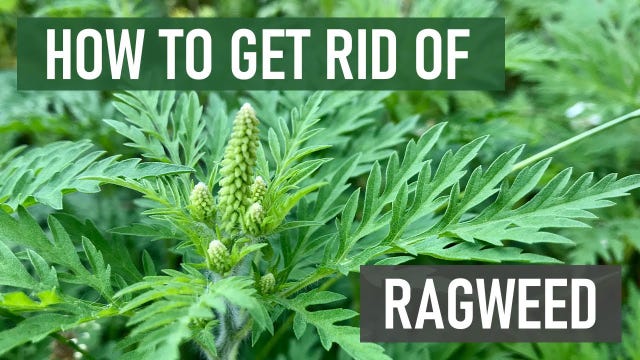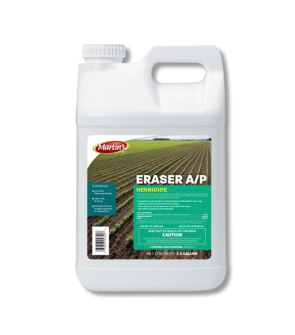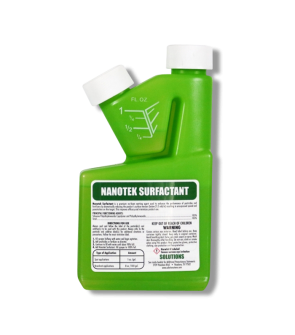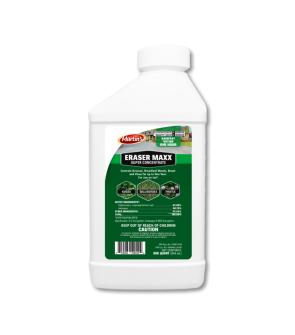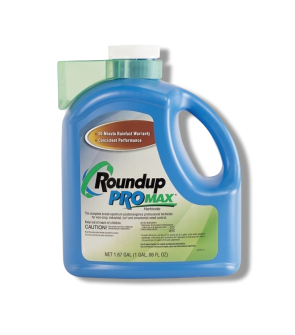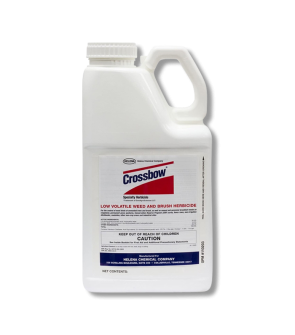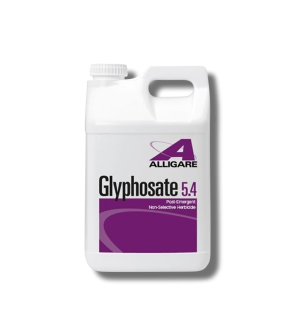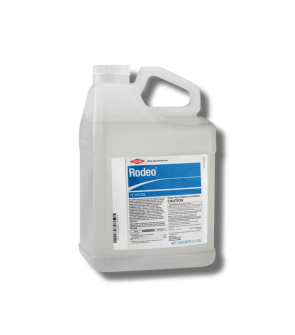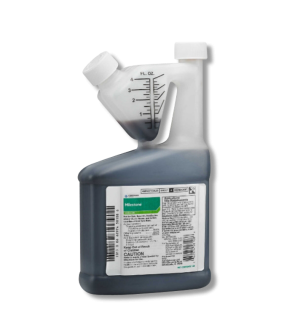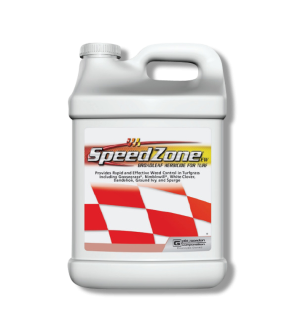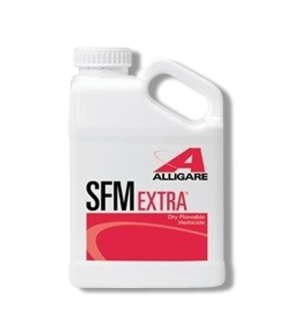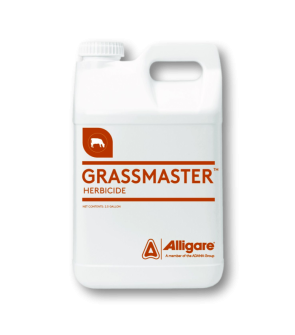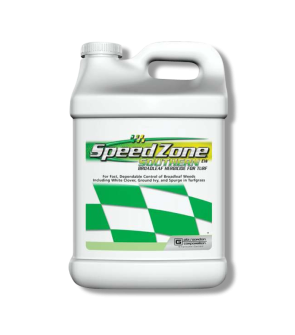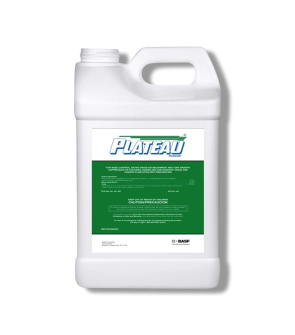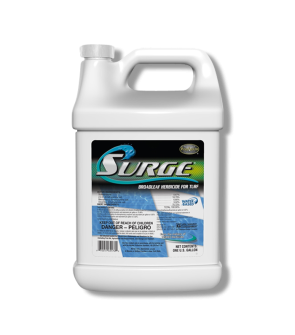Gain access to personalized product screening, the best pricing, rewards, and more!
Most Effective Products
Ragweed Control: How To Get Rid of Ragweed
Ragweed is an annual and perennial shrub that thrives in heavy and poorly maintained soil. It is pretty easy to identify on lawns due to its unique appearance, which includes feathery, green leaves that look similar to ferns and an upright growth pattern.
Ragweed pollen is a common allergen. A single plant can produce over a billion grains of pollen per season, and the pollen is easily transported into the wind. As a result, ragweed in a lawn or garden can cause hay fever and various allergy symptoms, including a runny nose, hacking cough, persistent sneezing, and red, puffy eyes.
There are around 17 species of ragweed across the U.S., the most widespread being common and giant ragweed. Ragweed survives mainly in human-impacted or disturbed areas. This plant thrives in parking lots, on the sides of highways, in agriculture, and in urban areas.
If it is ragweed season and you're having trouble with this invasive species on your lawn, our DIY ragweed treatment guide can help. Our lawn care experts recommend the directions below and will show you how to properly get rid of ragweed from your property.
Identification
Before carrying out a treatment program, you will need first to be certain that you are dealing with ragweed and not some other weed. Careless identification can lead to using the wrong treatment methods, which can waste time and money. Below, we shared identifying characteristics to know what ragweed looks like:

- As mentioned earlier, there are two common types of ragweed: Common ragweed and giant ragweed. Ragweed earns its name because its leaves appear raggedy.
- The distinctive seedheads produce a lot of pollen, and blooms appear as small yellowish hairy bumps. Their leaves are made up of multiple leaflets, and the flowers are often clustered at the top of the plant. Common ragweed has both male and female flowers.
- Giant ragweed is much larger in stature than common ragweed, often growing up to as high as 15 feet tall. They have giant lance-shaped leaves with teeth running along the margins.
Use the description and image above to help you properly identify ragweed on your property. If you are not totally sure, contact us and send us a photo of your weed. We will identify it for you and suggest treatment options.
Inspection
After you have confirmed that you are dealing with ragweed, you can move on to inspection. During this phase, you will locate areas where ragweed is thriving and observe the conditions that allow it to thrive. This information will help you know where to focus your herbicide application.

Where to Inspect
Both ragweed species can grow anywhere and do not discriminate where they can take hold. Their flowers are arranged in spikes at the tops of stems, so they would be hard to miss. Those allergic to ragweed can detect their presence quite easily.
Ragweed season takes place between early August and early October in the northern part of the US and Canada, while in the southern states, the season can vary depending upon the climate and can be an issue year-round. Allergy season is usually synonymous with ragweed season, and when it comes in bloom.
What to Look For
Common ragweed can be easy to find due to its distinctive seedhead and the pollen it creates. Giant ragweed also has very noxious pollen that can cause allergies and can stand out because of its large leaves. They can also grow alarmingly tall, which makes the "giant" in its name very fitting. This plant can grow up to 6 feet to 20 feet tall and come up virtually anywhere in the soil.
The symptoms of ragweed allergies include itchy, watery eyes, a stuffy nose, or breathing issues. If you may be allergic and are suffering from these issues, it is a dead giveaway that Ragweed may be growing on your property or nearby.
Treatment
Before applying products, you should always wear the proper personal equipment when herbicides are being mixed and handled. Wear jeans and a long-sleeve shirt, along with gloves and goggles.
We suggest a post-emergent application of 2,4-D Amine for both giant and common ragweed. This professional-quality herbicide is easy to use and is selective, so it will only target the weeds and not harm your desired vegetation.
Step 1: Measure and Mix 2, 4-D Amine

Begin by calculating the square footage of the treatment area to determine how much 2,4-D Amine you will need to treat ragweed. To find the square footage, measure the treatment areas' length and width in feet, then multiply them together (length X width = square footage).
For turf applications, 2,4-D Amine should be mixed at a rate of 2 to 3.16 pints per acre.
This amounts to .72 to 1.1 fl. oz. per 1,000 square feet for small applications with a hand sprayer.
Mixing 2 4-D with a surfactant like Nanotek Surfactant will help the product stick better to the Ragweed and make the herbicide work more effectively.
For example, if you have a 2,000 sq. ft. area to treat, you must mix 1.44 to 2.2 fl. oz. in 2 gallons of water. Once you have made your measurements and calculated how much 2,4-D you need, mix the product and surfactant with the appropriate amount of water in a handheld or backpack sprayer. Shake the sprayer to ensure the solution is well-mixed, and then you're ready to spray.
Step 2: Apply 2-4 D Amine to Ragweed
Use a super fine mist with a handheld sprayer on a fan nozzle setting to get an even coating and, thus, better control. The best time to spray for ragweed is in the early spring. Spray the weeds to wet but not to the point of runoff.
It may take more than one application to eliminate the plant's roots. For best weed control at the time of treatment, ragweed should be small, actively growing, and free of stress caused by extremes in climatic conditions, diseases, or insect damage.
Do not use the product on susceptible southern grasses like St. Augustine.
Prevention
Once you have treated the ragweed and removed it from your lawn, you need to make sure they don't make a return. Here are some preventative measures to take to lessen the chances of ragweed making a comeback.
- Ragweed plants like to grow in heavy, tiled soil and are frequently found in soil that lacks sufficient fertility. They also do not tolerate being mowed very well.
- As a result, regular mowing at a height of 3 to 4 inches is one of the best ways to control ragweed in your lawn and flower beds. Along with improving soil fertility with a fertilizer application, this will create a healthy, nutrient-rich soil that can make it difficult for ragweed to re-establish.
Key Takeaways
What is Ragweed?
- Ragweed is notorious for invading lawns where they are not wanted and for producing large amounts of pollen.
How To Get Rid of Ragweed
- Our top recommendation for treating common and giant ragweed is 2,4-D Amine Selective Weed Killer. For the best results, apply it when the ragweed is young and actively growing.
Preventing Ragweed Reinfestation
- You can prevent ragweed with regular lawn maintenance practices like fertilizing your lawn and mowing regularly.






